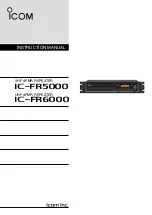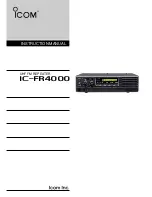
8
guarantee cover.
2.0 Installation
The location chosen for the heater must
allow for the fitting of an effective flue
system.
The location must also allow for adequate
clearance for the air supply, return air
circulation, gas supply, electrical supply,
whilst also providing good and safe working
access.
The heater must be installed so that it is
level, supports for the heater must be
sufficiently robust to withstand the weight of
the heater and any ancillary equipment.
Any combustible material adjacent to the
heater or flue system must be so placed or
shielded so that its surface temperature
does not exceed 65
°
C. Generally a free
blowing heater should be located at a height
(measured from floor level to the base of
unit) as detailed within section 2.1.
LCSBD free blowing heaters are at their
most effective when located as close to the
working area as possible. However care
should be exercised to avoid directing the
discharged air directly onto the occupants of
the area to be heated.
Where the passage of cold air causes
problems (e.g. by entrances, loading bays
etc) it is considered favourable if the heater
is positioned so as the discharge towards or
across the cold air source from a distance
from 1.5m - 6m dependent upon the size of
the entrance and the air throw
characteristics of the heater. On exposed
walls heaters should be positioned so as to
discharge towards, or along the length of the
exposed wall.
In areas where it is proposed that more than
one heater is to be installed, a general
scheme of circulation should be drawn up
and maintained, thereby offering the best
heat distribution. Air pressure within the
area heated and the outside air pressure
must remain the same, factors influencing
this would be the presence of extraction
systems, ventilation systems, and various
types of process plant.
Applications should be suspended centrally
over the area into which the warm air is to
be discharged .
2.1 Installation Mounting Heights and
Clearances
The Heater must be installed within the
mounting heights indicated below at the
following heights in metres and on a level
non-combustible surface capable of
adequately supporting the weight of the unit
and ancillary equipment .
2.2 Heater Mounting
The heater and flue must be adequately
supported by one of the following methods ;
a) Suspension by steel drop rods or
straps from the
M10
fixing points
located on top of the heater.
These must be of sufficient strength to
safely carry the weight of the unit and
ancillary equipment. The straps may only
drop vertically to eyebolts, if used;
I.E
. They
must not be joined to the eyebolt at an angle
to the vertical, and eyebolts if used should
be of an approved type.
Model
95
120
145
Min
2.4
Max
5.0
Model
95
120
145
Above
300
Below
300
Right side
250
Left side
950
Clearances LCSBD in mm
Left hand side = burner compartment side









































